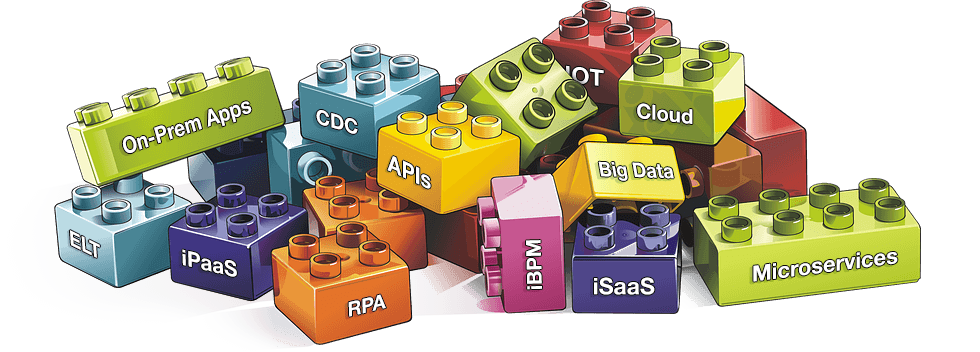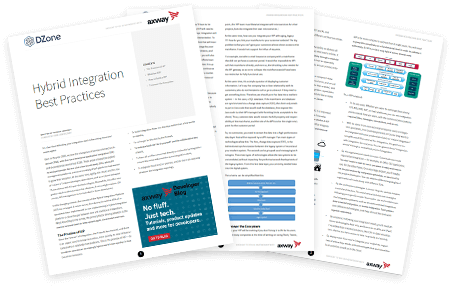Let’s be honest: it doesn’t matter if you’re nine years old or 90 years old… Legos are amazing. Any space ship, a medieval castle, or unbelievable Rube Goldberg-esque contraption is the result of a precise combination of many smaller pieces. And the best part is, the possibilities of what you can build with that modularity are endless.
Developers, switch on your kid-brain for a moment and imagine your IT architecture as a Lego set. You have all these pieces — cloud-based applications, on-premises applications, microservices, iPaaS/iSaaS solutions, legacy integrations like MFT and ETL, and so on—that need to be connected in just the right way to build your outstanding final product.
How do you take on a task like that?
API Management and hybrid integration: Putting the pieces together
Back in July, Thomas Jardinet put together an outstanding refcard on Hybrid Integration Best Practices with a very short but very important point buried smack dab the middle:
“There is a value within API management that is relatively over-looked: its contribution to the concept of modular IT … Any product/service of a company is the result of a precise combination of IT services.”
Does that last sentence ring a bell?
Among the biggest benefits of employing a hybrid integration platform (HIP) is that connecting all those pieces, managing APIs, and developing and deploying your product becomes vastly easier.
Refcard: Hybrid Integration Best Practices
Read the full refcard to see:
- How to Build a hybrid integration platform
- HIP Technology Best Practices
- Hybrid Integration Use-Cases
- And more…
To continue our Lego metaphor, it not only lets you build with new pieces without having to throw away the old ones but also gives you the ability to connect them all together to form a cohesive final product. This is especially important for larger companies that rely heavily on legacy systems and simply do not have the agility of a start-up to make changes to their foundational backend.
Having to toss out old systems, build new ones largely from scratch, transition smoothly from old to new, and do so quickly is an expensive, risky, and often unrealistic move for businesses. Hybrid integration platforms eliminate this by bringing modularity to your IT architecture, simplifying API Management, and enabling even large organizations to adapt and innovate quickly.
Faster development, easier deployment
One other stand-out part from Jardinet’s refcard was his advice on understanding that a hybrid integration platform is a framework for development that combines several technologies, as opposed to being a single stand-alone software solution you can buy “off the shelf.”
As every developer knows, having a structured approach to development and setting clearly defined requirements out of the gate are absolute must-haves for any project, and hybrid integration platforms provide that structure for making developers’ lives easier.
Just like those Lego contraptions you built as a kid (or as an adult…), the modularity that a hybrid integration platform brings to your codebase enables you to connect all the pieces needed to develop and launch your apps, platforms, and services more quickly and easily.
And that’s amazing.
Maintain a Strong Hybrid Integration Strategy
See this full Hybrid Integration Best Practices refcard and more at DZone.com



